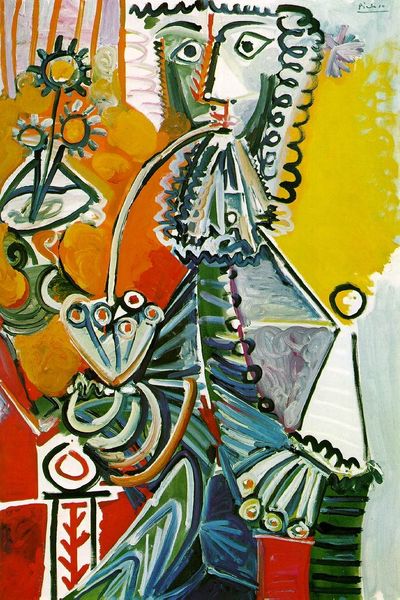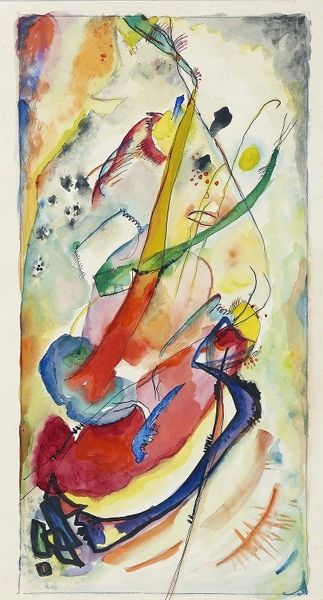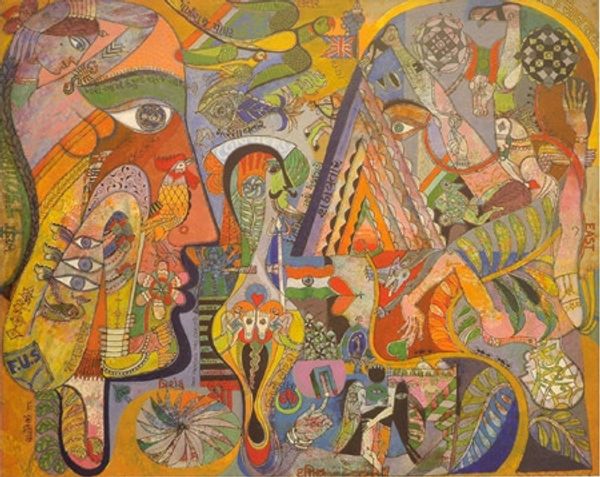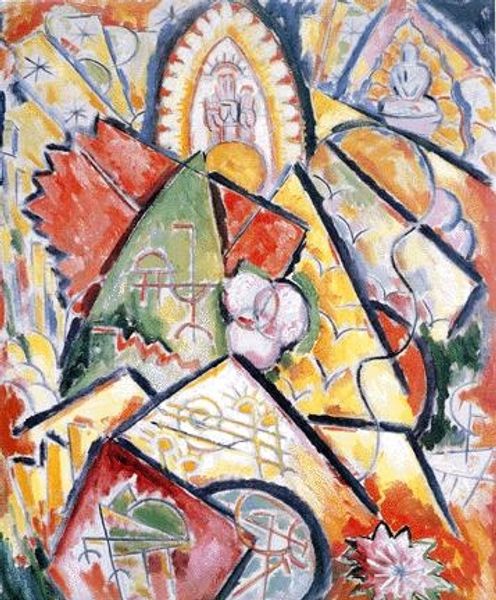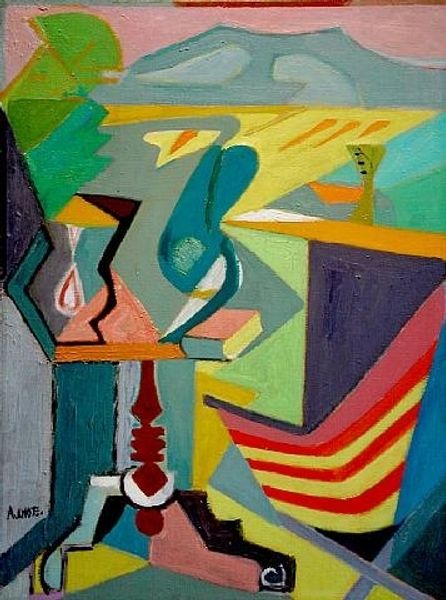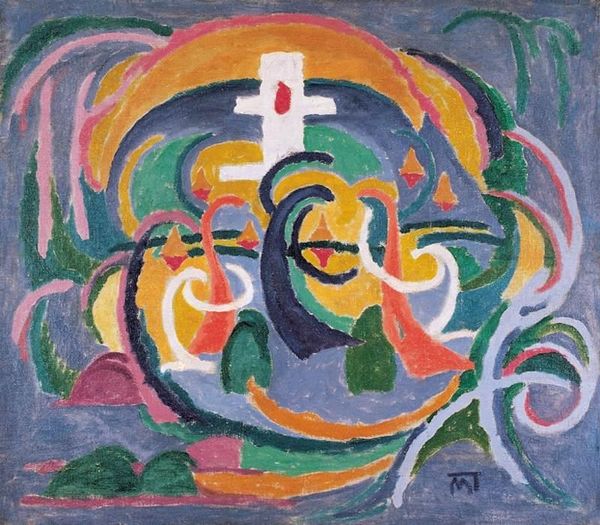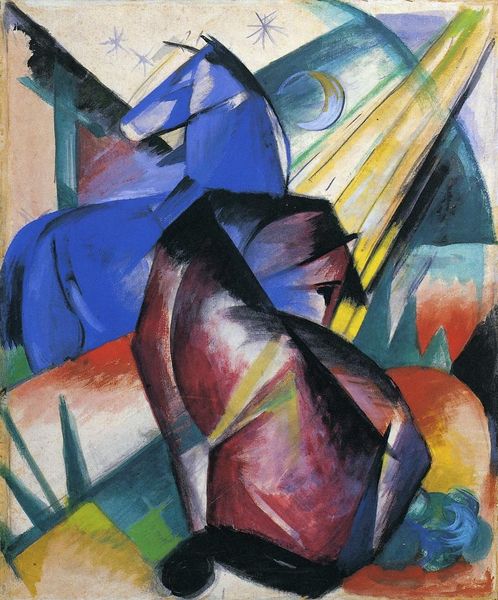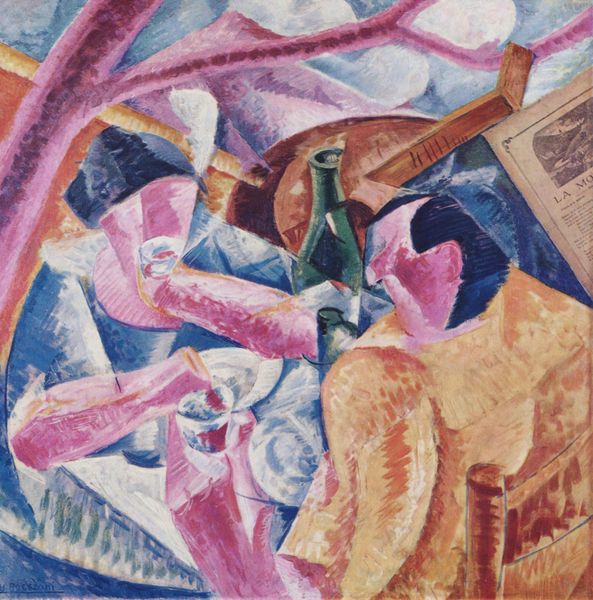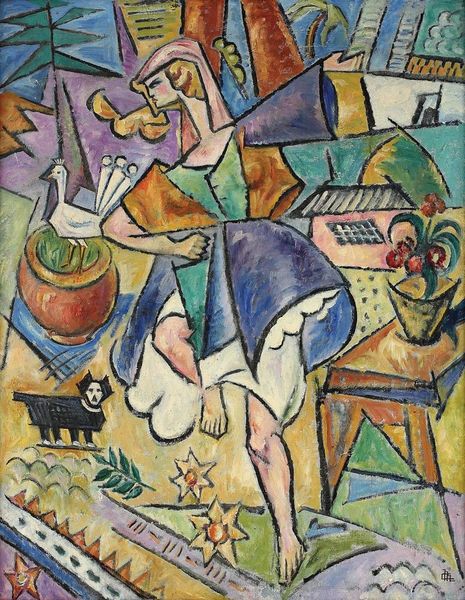
painting, acrylic-paint
#
portrait
#
cubism
#
abstract painting
#
painting
#
acrylic-paint
#
figuration
#
acrylic on canvas
#
expressionism
#
horse
#
cityscape
#
modernism
#
expressionist
Copyright: Public domain
Amadeo de Souza-Cardoso painted this striking image of Don Quixote in 1914, using oil on canvas. Souza-Cardoso was Portuguese, and spent most of his career in Paris at a time when the city was the undisputed centre of avant-garde painting. Here we see the famous Spanish literary figure reimagined through the fractured lens of Cubism and Futurist dynamism. The planes and colors create an exciting but unstable picture that could be seen as a metaphor for the way that political, social and artistic traditions were changing. Portugal at this time was undergoing modernization, which brought it into contact with broader European society, yet it also retained strong ties to its rural past. Souza-Cardoso’s personal history, as well as the rise of nationalistic sentiments during the First World War, might have influenced the artist's vision here. When we consider such historical factors, we see how Souza-Cardoso's engagement with international movements cannot be separated from his own context.
Comments
No comments
Be the first to comment and join the conversation on the ultimate creative platform.


